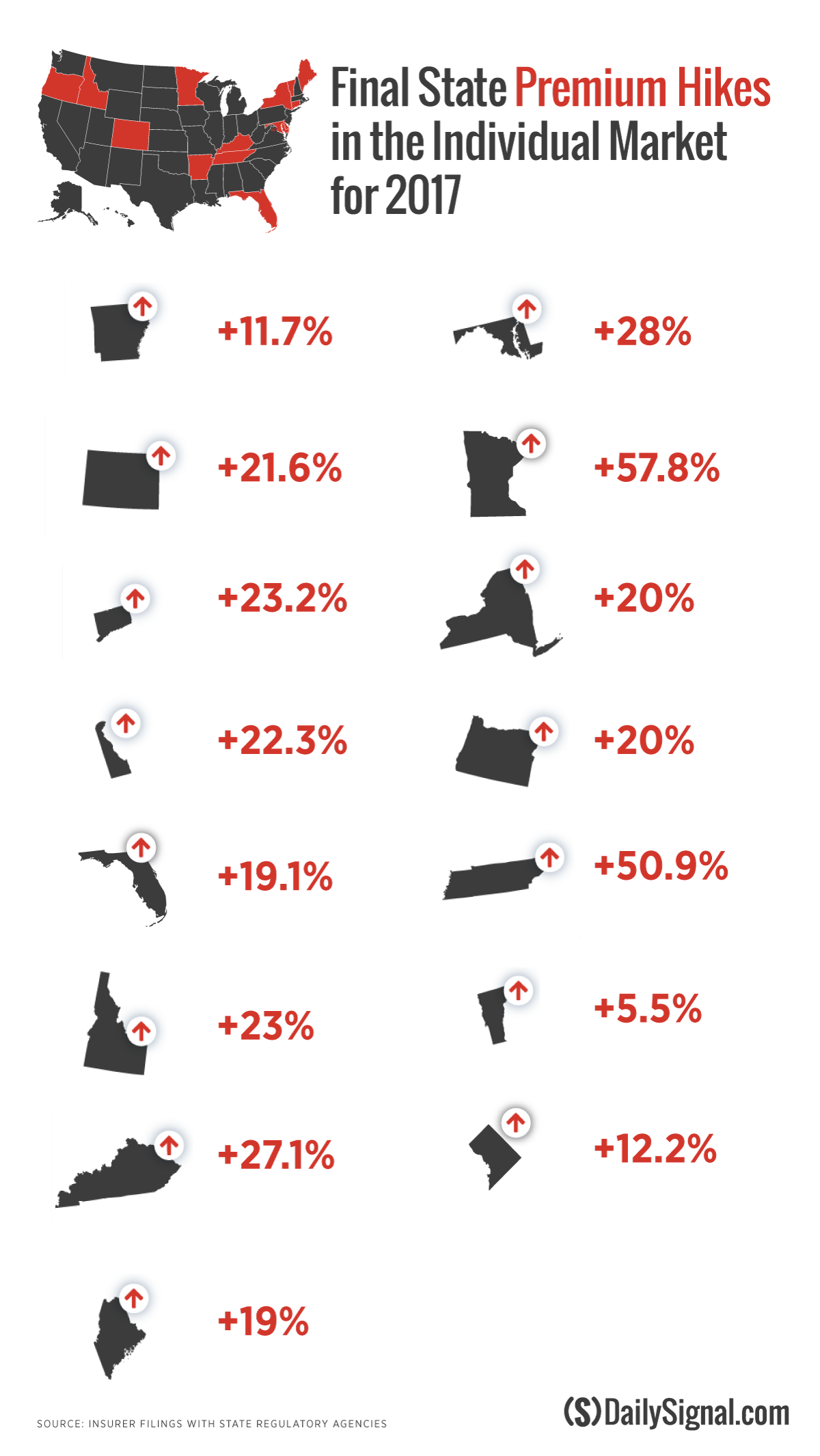Consumers will be hit by increases in health insurance premiums averaging 10 percent or more in all but one of 14 states where regulators have approved higher rates.
In Vermont, insurance rates will rise by an average of 5.5 percent.
Insurance companies submitted their rate proposals for 2017 over the past few months. In the lead-up to Obamacare’s open enrollment period beginning Nov. 1, regulators have begun to approve or alter the requests.
The Daily Signal depends on the support of readers like you. Donate now
Consumers purchasing health coverage both on and off of the Obamacare exchanges will see their rates increase by an average of at least 10 percent, according to the insurer filings in 14 states and the District of Columbia.
The Obama administration has stressed that many consumers, especially those who qualify for government subsidies to pay premiums, won’t feel the full effects of the higher payments.
More than 9 million Americans received subsidies to help pay premiums, Department of Health and Human Services Secretary Sylvia Mathews Burwell said earlier this month.
However, another 2.5 million who purchased plans off the Obamacare exchanges in the individual market may qualify for financial assistance if they instead buy plans on the exchanges. Those who receive subsidies could end up paying monthly premiums of less than $75, Burwell said.
But Burwell didn’t address the nearly 10 million Americans who purchase plans sold in the individual market and don’t qualify for a subsidy.
Rising premiums, experts warn, will directly affect those consumers.
In their filings with states, insurance companies point to the end of Obamacare’s reinsurance program as one reason they need to increase rates. The reinsurance program, which expires at the end of the year, was designed to mitigate risk among insurers.
Insurers also point to their customers’ high medical costs as contributing to rising premiums.
Here’s how rates in the District of Columbia and the 14 states—Arkansas, Colorado, Connecticut, Delaware, Florida, Idaho, Kentucky, Maine, Maryland, Minnesota, New York, Oregon, Tennessee, and Vermont—will increase next year:































